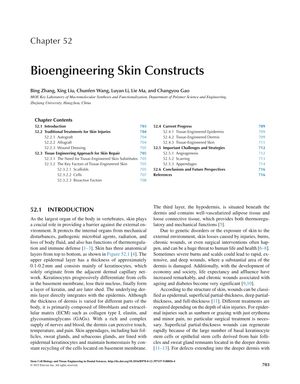Bioengineering Skin Constructs
November 2014
in “
Elsevier eBooks
”

TLDR Future research should focus on making bioengineered skin that completely restores all skin functions.
The document from 2015 reviews the progress in bioengineering skin constructs for repairing skin injuries, such as burns and chronic wounds. It discusses the limitations of traditional treatments like autografts and allografts, and the advances in tissue engineering that involve creating scaffolds from materials like collagen and synthetic polymers to support cell growth for skin regeneration. The use of seed cells, including stem cells, and bioactive factors like growth factors and cytokines, is emphasized for their role in enhancing wound healing. Commercial products like Apligraf® have shown clinical success, but challenges remain in achieving rapid angiogenesis, preventing scarring, and regenerating skin appendages. The document reports on a study using a bioengineered skin construct with RNA interference to reduce scarring, showing promising results in pigs. It concludes that while significant progress has been made, future research should aim to create bioengineered skin that fully restores all skin functions, including appendages, through biomimetic scaffolds and stem cell technology.

